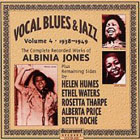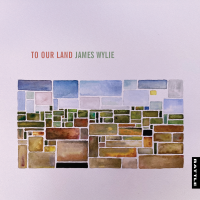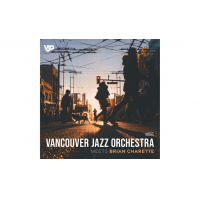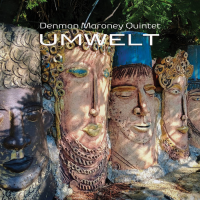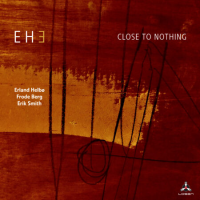Home » Jazz Articles » Album Review » Various Artists: Vocal Blues & Jazz Volume Four 1938-1949
Various Artists: Vocal Blues & Jazz Volume Four 1938-1949
But in 1945, Dizzy Gillespie and Don Byas could make a record like “Evil Gal Blues”, where they played what was then ultrasophisicated music over and behind a down and dirty lyric delivered by a sexy female singer. Gillespie’s licks still sound jarring (in a totally pleasant fashion) today one can only wonder how they sounded to contemporaneous ears. Yet, the song gels nicely, and the impression one gets is that everybody was having a good time creating a good vibe. It was a time of peaceful coexistence, but it was doomed to be short-lived, at least among the jazz intellegensia. Subsequently, popular jazz artists like Gene Ammons suffered from critical neglect and condescension because they committed the unpardonable sin of playing music that “common people” liked. The battle lines had been drawn, and woe to those who crossed sides!
“Evil Gal Blues”, and others from the same session, can be heard on Vocal Blues & Jazz Vol. 4 (1938-1949), a collection assembled by Document Records (DOCD-1020) that gathers the complete recorded works of singer Albinia Jones (the featured performer on “Evil Gal Blues”) and supplements them with tasty rarities by Helen Humes, Ethel Waters, Rosetta Tharpe, and Betty Roche Alberta Price is also listed on the cover, but does not appear! Jones, the centerpiece of this collection, was a very good singer whose career was steady, if not spectacular, but when she suffered a crippling on-stage fall in the early 1950s, her career effectively ended. To today’s ears, she might sound slightly generic, but she exudes personality and has a great swinging feel. Her entire legacy is two 1945 sessions for National and three for Decca, two from 1947 and one from 1949. Taken as a whole, they reflect the changing currents of popular taste of the time. The National sides have a distinct jazz feel to them Frankie Newton and Edmond Hall are present at the first, and the second is the Gillespie/Byas session. Just two years later, backing is provided by various Sammy Price combos and have an early R&B feel, the tenor solos forsaking Byas and Hawkins for Jacquetian rambunctiousness. Regardless his support, Jones sings quite nicely and naturally, even on a few ballads that provide less than inspiring source material. If she had not suffered that injury, Jones could very well have had a big hit or three and be fondly remembered today. As it is, she is almost totally forgotten. Document is performing a valuable service by restoring her work to circulation. None of it has been widely available, and the session with Gillespie and Byas seems to have only been issued on 78s, if the CD’s booklet is accurate.
The other singers represented are all much better known, but the selections offered here are on the obscure side, stemming from various broadcasts, V-Discs, transcriptions, and private recordings. Humes is heard to great advantage with a Basie sextet including Lester Young on clarinet, and an Eddie Haywood combo with Jonah Jones, Willie Smith, and Vic Dickenson. She was always a delight, and these cuts are certainly no exception her glee is both unaffected and quite contagious. Waters is heard with the 1942 Duke Ellington band, and for somebody like me, who came to know her in the 1950s as a sedate singer of religious songs, these sides are part of the continuing revelation that she was, in fact, a pioneer of jazz singing, a genuinely swinging vocalist who neither asked for nor needed any compromise from her backing bands to get her message across. Her version here of “St. Louis Blues” flat out, rocks! Rosetta Tharpe, heard here with Lucky Millender and crew, also had a career in Gospel, but of a much more overtly emotional type than Waters. She could work the pulpit and the gutter with equal conviction, and her selection here is of the latter inclination, a Louis Jordan type up-tempo shuffle, and she really gets into it with an infectious energy that proves irresistible. Finally, there is Betty Roche, best known for her late 40s/early 50s stint with Ellington, but heard here circa 1943. It should come as no surprise that her vocal work is already cool, slinkily sly, and quite sexy. Earthy sophistication seems to have come quite naturally to her, and it is a delight to hear her, if only for one cut.
The booklet for this CD is brief but informative, with full discographical information included. Songwriter credits are needlessly omitted, but that’s the only criticism regarding packaging. Sound is quite clean, if a little lean on the extreme high end. It sounds as if some noise reduction technique was used, but none is mentioned. No matter the music itself is quite good and the sound quality is more than adequate, especially considering the painfully limited availability of most of these selections.
Although Document is positioned as a “specialist” label, the music heard here is of such high quality, and enough contrast exists between the various artists, that this disc makes both an excellent item for the completist and a very satisfying sampler for anybody new to this era of jazz and blues. There’s a lot of music in this vein to explore, and this disc is as good a general introduction as any.
Track Listing
(21 tracks, 60 minutes 11 seconds)
Personnel
Various Artists
variousAlbinia Jones, Helen Humes, Ethel Waters, Rosetta Tharpe, Betty Roch
Album information
Title: Vocal Blues & Jazz Volume Four 1938-1949 | Year Released: 2002 | Record Label: Document Records
Tags
PREVIOUS / NEXT
Support All About Jazz
 All About Jazz has been a pillar of jazz since 1995, championing it as an art form and, more importantly, supporting the musicians who make it. Our enduring commitment has made "AAJ" one of the most culturally important websites of its kind, read by hundreds of thousands of fans, musicians and industry figures every month.
All About Jazz has been a pillar of jazz since 1995, championing it as an art form and, more importantly, supporting the musicians who make it. Our enduring commitment has made "AAJ" one of the most culturally important websites of its kind, read by hundreds of thousands of fans, musicians and industry figures every month.

